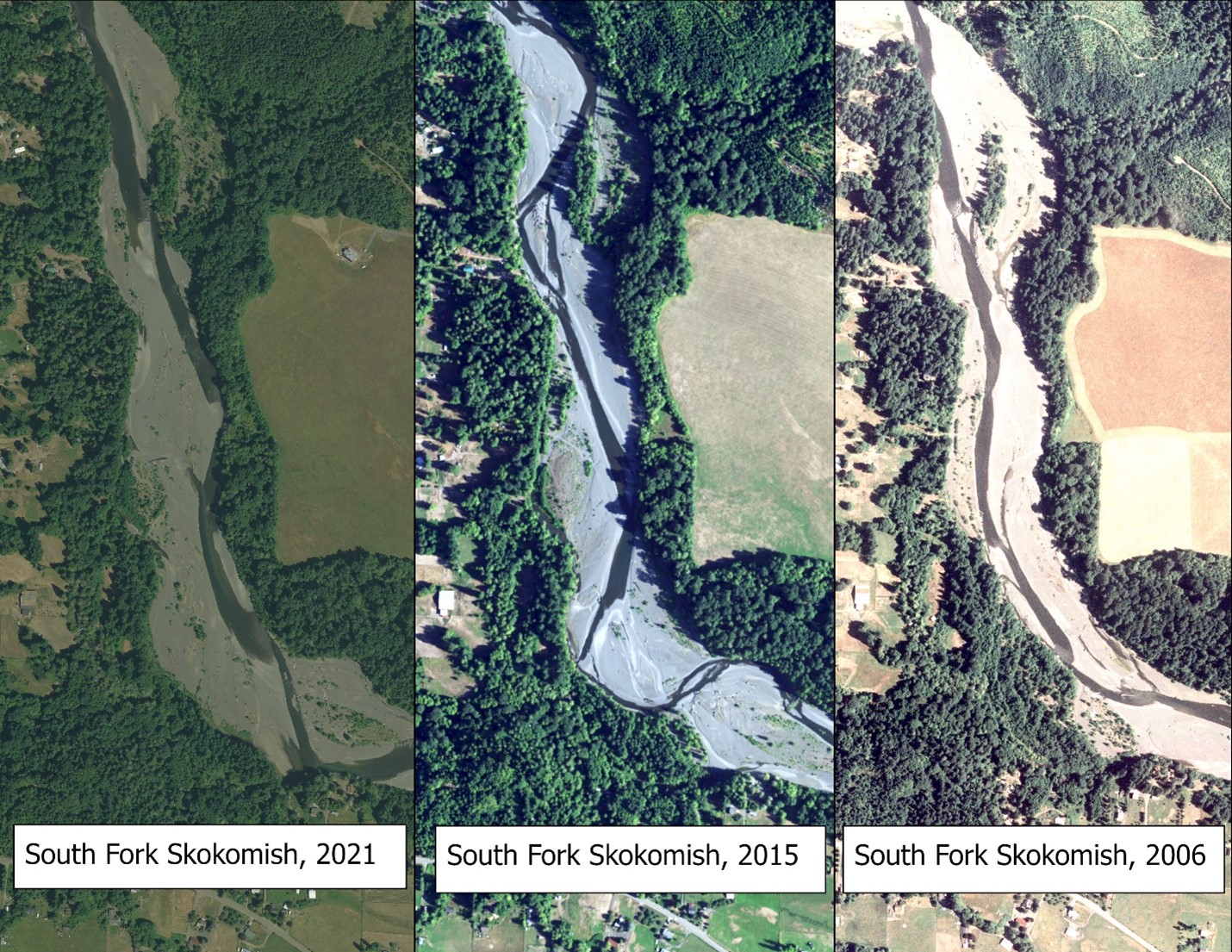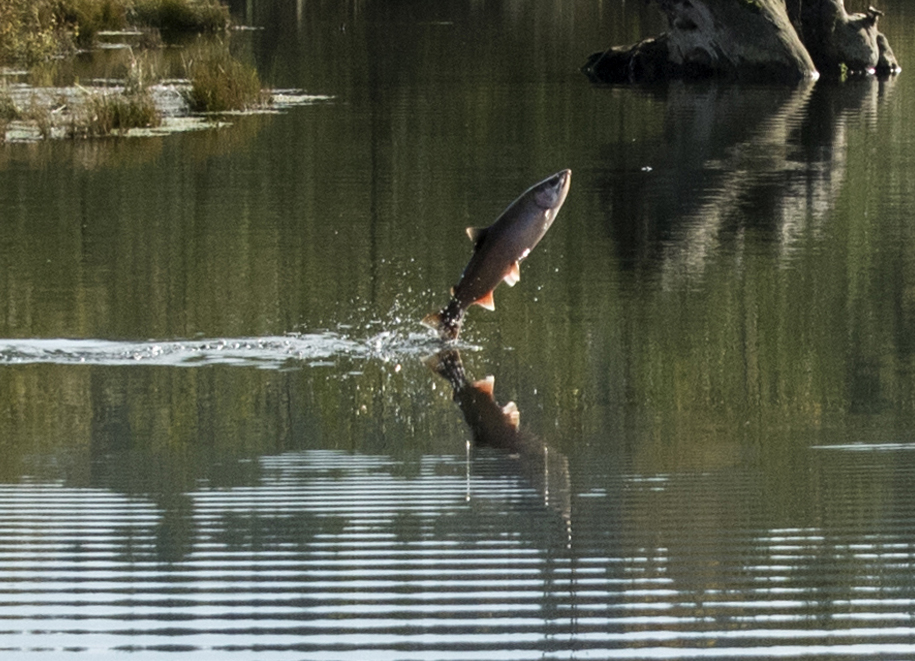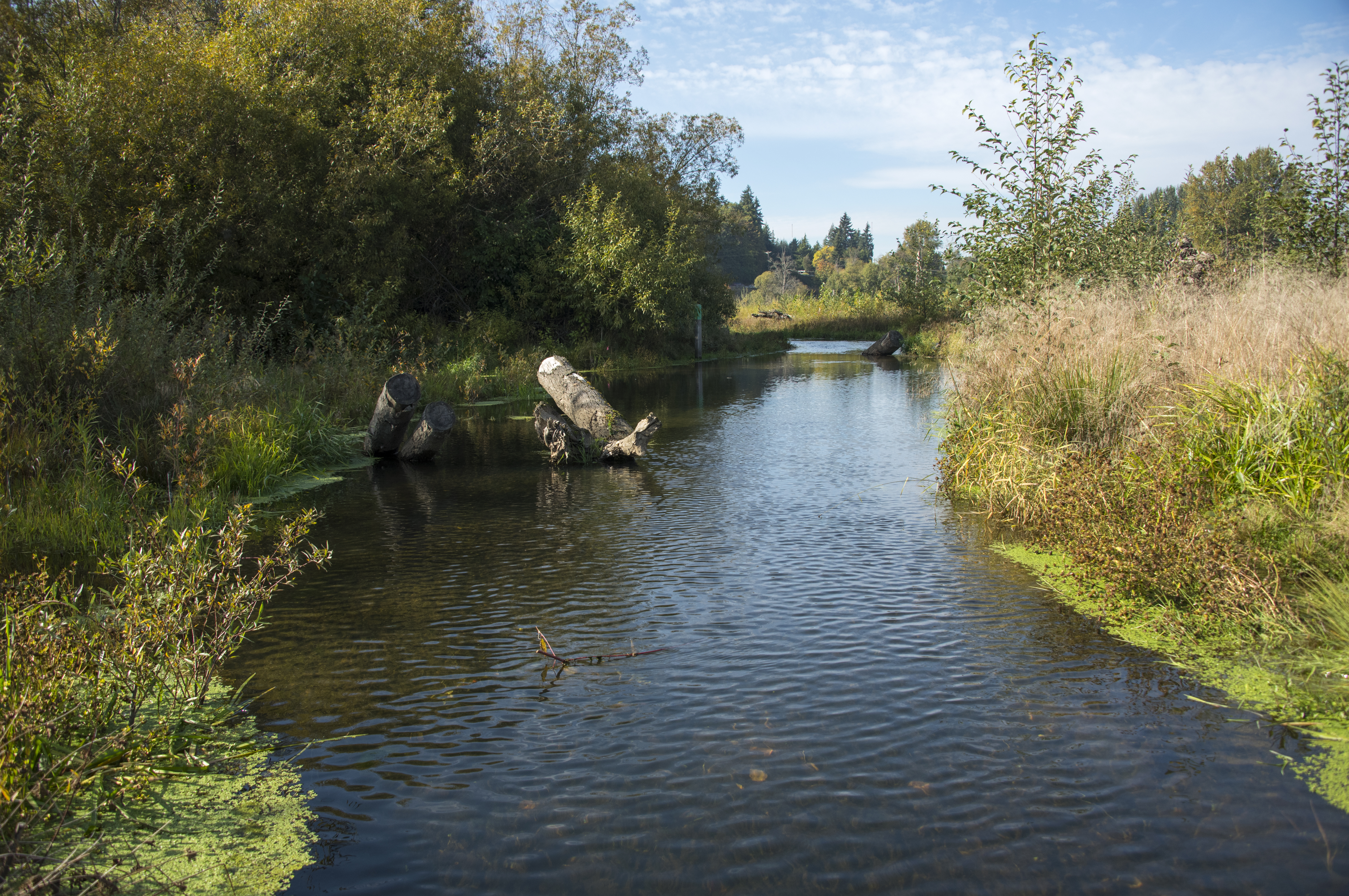Riparian education
Rivers and streams are part of a dynamic system often referred to as riparian. Riparian areas are not just the running water we see as rivers and streams. Riparian areas include the land along the edges of these water features. Land use and urbanization can damage these riparian areas, but their functions and values can be restored.
What is a Riparian system?
Resilient riparian systems improve the ability of the areas of land along the edges of rivers and streams to adjust to changes in the watershed. Healthy riparian systems have complex designs, provide shade for fish and aquatic life, and offer habitat in the water and adjacent lands. The term riparian systems refer to the entire habitat or system surrounding the water body. Native plants help hold the river or stream bank in place, large woody trees help provide shade for creatures in the water, and healthy invertebrates in the stream create a supportive ecosystem. A healthy riparian system includes all these elements. Once a riparian system is negatively impacted, it takes a lot of planning, planting, and time to restore the habitat. Salmon and other important species rely on healthy riparian systems to live, breath, eat, and spawn.

What is Climate Resiliency?
Climate resiliency is the ability for people and ecosystems to adapt to climate change challenges, transform as necessary to meet climate-related threats and opportunities, and recover. One way to improve nature’s resilience to climate change is to improve the condition of riparian systems, which when healthy, provide some of the most biodiverse habitats in Puget Sound. Resilient and biodiverse systems have opportunities to expand beyond a current footprint and adapt to events like increases in flooding or extreme weather events.
Puget Sound riparian systems depend on water and stable bank slopes, and have formed under our region’s average weather conditions. However, as the region experiences more frequent droughts and shifting precipitation patterns, we can expect to see changes in water levels across the seasons. Improving the resilience of the regoin's riparian systems will also improve the resiliency of resident animal species, including salmon, and the food web on which they depend. Use the links that follow to learn more about climate resiliency, riparian systems, and how landowners can connect with area conservation specialists to participate in local riparian restoration efforts.

Photo courtesy Port of Tacoma.
What does riparian restoration look like?
Depending on the condition of the riparian zone and the surrounding land use, restoration can be as simple as replanting trees and shrubs in the riparian area, or it can look as involved as creating a new river channel. Restoration typically happens in several phases:
1. Planning and design
Restoration of a riparian zone begins with an assessment of the current ecological functions and an evaluation of what is possible in the location to improve those functions. A lot of planning, collaboration, and on-the-ground assessment happens before work can begin.
2. Implementation
With plans in place, restoration specialists can prepare the riparian zone for replanting by removing invasive vegetation, relocating stream channels, and installing woody structures that add complexity to the system. When everything is in place, crews can plant native woody vegetation that will grow into protective streamside forests, and provide the desired ecosystem functions.
3. Monitoring and maintenance
Riparian restoration projects need care and attention long after they are planted. Regular maintenance during the first 3-5 years can protect the restored area from intruding invasive plant species and ensure that native plants are healthy and thriving. Depending on the site, some level of maintenance may be needed for up to 20 years after planting, which decreases as time passes. Monitoring sites for plant survival and hydrologic function affords restoration specialists the opportunity to learn and adapt for future projects.
4. Adaptive management
Rivers are complex, dynamic and powerful forces in Puget Sound, so riparian restoration is never really a straight-line process. Unpredictable flood events can dramatically change the behavior and path of a river, sometimes completely bypassing or damaging well-planned restoration projects. Restoration specialists are in a challenging position and must adapt to these changes to ensure the restoration site will continue to improve ecological function.
Why is riparian restoration important?
Improving the function of riparian zones can positively affect the immediate area where the restoration occurred and benefit downstream communities and ecosystems. Healthy riparian areas can decrease erosion, improve water quality, and encourage diverse fish and wildlife habitat. Improved riparian zone function provides critical habitat for salmon and benefits wildlife all the way up the food web, including marine species such as endangered Southern Resident Killer Whales.

Photo courtesy of the Port of Tacoma.
Related links
Contact information
Michelle Quast
Riparian Systems Technical Lead
Michelle.Quast@ecy.wa.gov
564-669-8549

